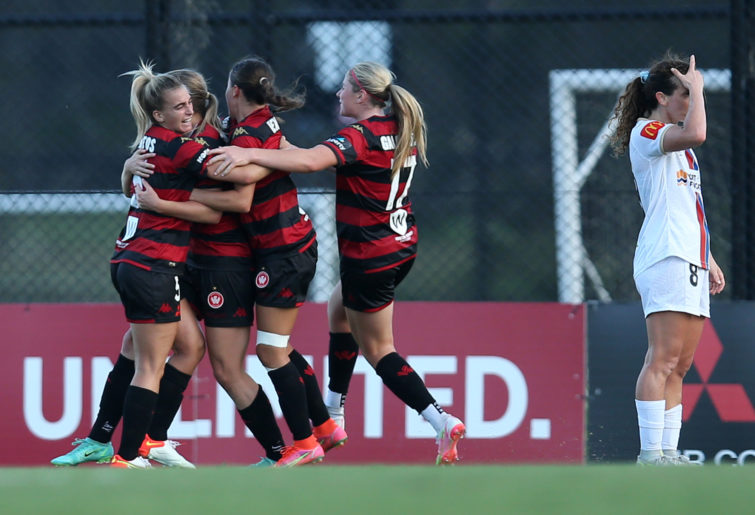
When the Western Sydney Wanderers fronted up to play the Newcastle Jets, it was after a trying week.
Tuesday night’s 5-0 loss to Canberra is only the tip of the iceberg. While that was challenging enough, many of the players have to juggle recovery and training while also pursuing careers and jobs away from football.
It is a physically and mentally draining challenge, but footballers in the A-League Women have become used to it.
Sheridan Gallagher gets up at 4am most days to train race horses in her family’s business. Rosie Galea, the Wanderers’ 2020-21 golden boot winner, works two jobs as well as playing football.
Libby Copus-Brown is a childcare worker. Clare Hunt is a schools learning support officer. Bryleeh Henry coaches kids and works with the Wanderers’ community department. Most others also hold down day jobs while trying to make ends meet.
A number of players are also completing university studies or TAFE courses, while two 15-year-olds – Alexia Apostolakis and Ella Abdul Massih – are still in high school.

Alexia Apostolakis. (Photo by Ashley Feder/Getty Images)
Even coach Catherine Cannuli has to earn a crust elsewhere. She is the technical director of women’s football at Southern Districts Football Association as well as a junior coach for the Southern District Raiders in the NPLW girls.
There have been several calls recently to make the A-League Women a full-time competition, and while this sounds good in theory and there is plenty of support for it, what it actually entails is a different story.
The people that count the most, the players, have mixed feelings about it. While the general vibe is they need to be full-time, there are some who would prefer it to stay the way it is.
As mentioned, a number of players have careers away from football that are in the process of being established. Giving that up to play football full-time isn’t feasible for some, especially as the current pay rate won’t be enough to help them make a comfortable living.
Women footballers, like everyone else, want to buy a house, raise a family, go on holidays, and have a nice car. In order to do that, they need serious coin.
At present the minimum wage is $17,055 for a four-month A-League Women season. If the season was to become full-time, the wage will theoretically triple (including paying for an off-season).
This amounts to less than $52,000 (before tax) or around $44,000 after tax at the current rate of pay.
The average Australian income sits at around $68,000 (before tax) according to the Australian Bureau of Statistics.
The poverty line for a single person (with no dependents) according to the Melbourne Institute is estimated to be just over $30,000. That is the cost of basic necessities.
If the pay rate was to go well above that where players can afford to give up their day job, it would change things drastically, but the reality is there is little appetite from A-League owners to do this.
Women’s programs already run at a loss, adding to this isn’t feasible according to many industry insiders.
The theory is that a full-time competition will enhance the standard and thus bring in more revenue due to a better product, however the increase in revenue isn’t expected to align with the increase in cost.
One owner said it’s easy for everyone to have an opinion, but then expect someone else to pay for it.
It’s the old chicken versus egg argument.

(Photo by Jason McCawley/Getty Images)
Many women footballers currently play in the various NPLW competitions around the country in winter, with most getting paid to do so. The demands of playing at this level are far less than what is expected at an A-League Women level.
So a number of current footballers prefer the current model of playing NPLW during winter and getting paid cash, keeping their day job, then spending summer in the A-League Women.
If the A-League Women competition was to become full-time, it will only add to the players’ time constraints, giving them less opportunity to pursue other careers and interests, and at the current pay rate, for many it would be financially disastrous.
In fact, a number of current A-League Women players would retire if the league became full-time at the current pay rate.
Many talented footballers already don’t pursue A-League Women now due to their inability to commit to four months. If this became 11 months (with four weeks annual leave), it would be even less likely they would want to play.
Having said all this, there are certainly a large proportion of players who are willing to make the short-term sacrifice for a long-term gain.
This never-ending debate will go on forever. Meanwhile, spare a thought for the 32 players who took the field at Newcastle No. 2 Sportsground on Saturday.
While it’s easy to criticise the players, let’s not forget what they have to go through to play at this level.